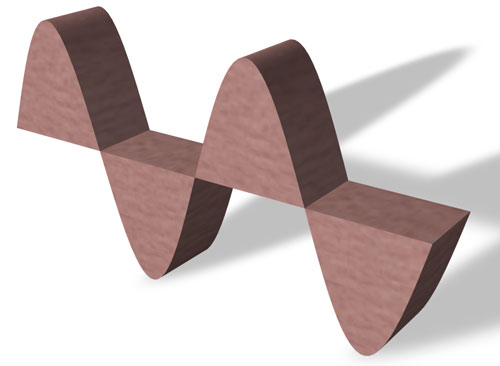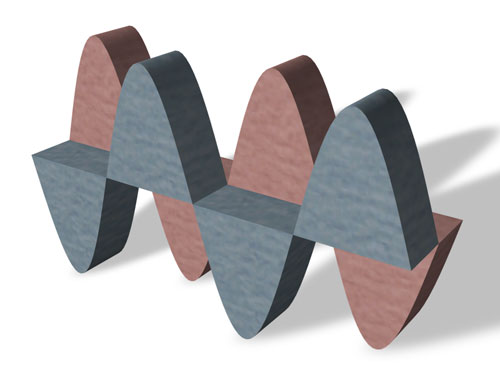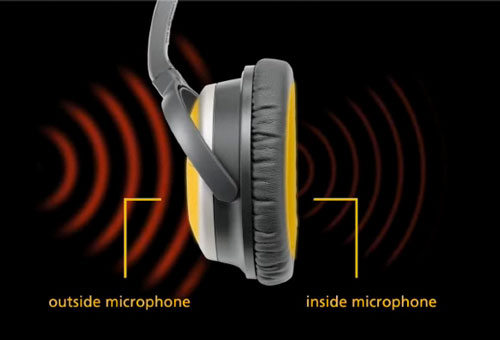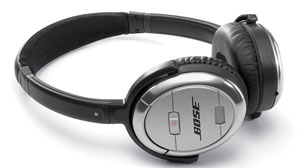 Active Noise Cancellation Headphones are not a new invention. The idea of actively cancelling noise by artificially generating its exact inverted replica has been studied since 1950, for reducing noise in different kinds of noisy environments. It is only in the late 70's that Dr. Amar Bose, founder of Bose corp. had the idea of applying this technique to headphones, and after 10 years of research in the mid 80's, he realized his first model of Active Noise Cancelling headphones. The aim was to use them for protecting the hearing of aircraft pilots.
Active Noise Cancellation Headphones are not a new invention. The idea of actively cancelling noise by artificially generating its exact inverted replica has been studied since 1950, for reducing noise in different kinds of noisy environments. It is only in the late 70's that Dr. Amar Bose, founder of Bose corp. had the idea of applying this technique to headphones, and after 10 years of research in the mid 80's, he realized his first model of Active Noise Cancelling headphones. The aim was to use them for protecting the hearing of aircraft pilots.
In the latest years Noise Cancelling Headphones are becoming mainstream, not just for airline pilots, but also for plain music listening in a noisy environment, be it an airplane, or just a work environment. A lot of headphones manufacturers joined Bose lead, and are now offering their line of Active Noise Cancellation headphones.
Any kind of headphone by design, passively reduces some external noise. Some types of headphones block more noise than others. Open over-the-ear headphones will block less noise than closed around-the-ears ones. However in very noisy environments passive noise reduction may not be enough. You will tend to raise the volume just to cover the background noise. This results in a poor listening experience at best, and can lead to ear fatigue, and even to safety risks for your hearing if the volume is raised to excessive levels. Especially on plane trips, background noise can be very loud. And if you plan to listen to music during the trip, you'll want to find a way to keep the level of music above plane noise, without destroying your ears.
Principle of Operation
Sound is a pressure wave. What this means is that music and noises that we hear are just a series of variations over time of the pressure of air. These air pressure variations propagate in the environment, e.g. from headphone speakers or noise source to our ears. Our ears can sense air pressure variations and detect these as "audio" for our brain to process and enjoy.
The shape of these pressure variations over time determines what you actually hear. For example, if you are listening to a sine wave at some frequency (ugh. Don't do this. Sine waves are quite unpleasant to listen to), its waveform shape will look like this:
Now suppose someone close to your desk at work found a way to annoyingly emit a sine wave, totally killing you while you'd like to quietly enjoy some music during work. What could you do? Well, what if you managed to emit another sine wave that is just an inverted replica of your annoying neighbor?
If you could achieve this, the result would be...silence! The two waveforms would cancel each other, and the total pressure variation, the sum of the two, would be equal to zero. This is the essence of Active Sound Cancellation.
Sounds easy enough. The tricky part is that sound waves travel in the environment, and you'll want this cancellation to happen right at your ears, not somewhere else.
Active Noise Cancelling headphones implement this technique by having a microphone that measures external noise. Electronics in the headphones generate an inverted replica of it, and transmit this replica to your ears through the headphones speakers, added on top of the music that's being played back.
The result will be that the external noise detected by the microphone that would reach your ears gets cancelled by the replica transmitted by the headphones speakers, and only music will remain, actually reaching your ears.
How Well Do Active Noise Cancellation Headphones Work?
The first time you wear a set of Noise Cancelling headphones you're in for a surprise. Turn them on, even without music, and the external world instantly becomes very distant and far away. It's a really a funny and great sensation.
In practice Active Noise Cancellation headphones are not able to cancel 100% of external noise. It's not easy to do a 100% perfect cancellation, as you would need to have the noise detection microphone right inside the ear which is obviously impractical. Also, the inverted noise generated by the headphones electronics try to replicate the noise shape, but fidelity cannot be 100% perfect, and thus some bits of noise remain alive and don't get totally cancelled.
The state of the art of this technology today is that Active Noise Cancelling headphones by Bose isolate by 20 dB. This means that 77% of external noise gets blocked and won't reach your ears. So, it's good isolation. But it's not total isolation.
This technique is more efficient at blocking lower frequency noise, and those kinds of noise that doesn't vary too quickly over time. So, Active Noise Cancelling headphones are very good for cancelling noise from a plane engine, or from an air conditioning system. They are less effective at blocking voices of people talking around you.
A practical factor to consider is that these headphones need a battery to power the noise cancelling electronics. So, you'll be able to use them only for so many hours before you need to look for a plug for recharge, or to replace the batteries.
Active Noise Cancellation headphones are known for not having the best sound quality. The process of actively eliminating noise tends to produce sound artifacts at high frequencies, that are heard in the form of a background hiss.
What about Passive Noise Reduction?
Another type of headphones that's becoming extremely popular is In-Ear headphones (also called In-Ear Monitors, IEM). They're earbuds that get inserted inside your ear canal to the point where they create a "seal". This blocks external noise very effectively.
In-Ear headphones are often the preferred choice by audiophiles, as they offer several advantages:
- Noise isolation tends to be higher. In-Ear headphones typical isolation from external noise is in the range 25-35 dB, while Active Noise Isolation is around 20 dB.
- Sound quality of in-ear headphones, comparing models of similar prices, is usually much better. Being completely passive, in ear headphones don't produce artifacts of hisses, that are typical of active noise cancelling headphones.
- In-ear headphones don't need a battery.
- In-ear headphones are much more portable.
So, are in-ear headphones better on all fronts? Not necessarily. Here are some advantages of Active Noise Cancelling headphones:
- Active Noise Cancelling headphones isolate from low frequencies better than in-ear headphones, which tend to have more efficient isolation for mid and high frequencies. So, in-ears will block voices better, while Active Noise Cancelling will be better at blocking the noise from a plane, or from a train.
- Some people may not find it comfortable to have earbuds inserted into their ear canals, especially for many hours. In fact extensive use of in-ear headphones may lead to ear fatigue. Active Noise Cancellation headphones have a more traditional on-ear, or around-the-ear, design which will be ok to wear for anyone.
Most Popular Manufacturers and Models
The most popular manufacturer of Active Noise Cancelling headphones is Bose. It goes without saying. They invented this technology, were the first to market it and are constantly pushing to improve it. Bose current product line includes Bose QuietComfort 15, full size, with enhanced noise reduction system, and Bose QuietComfort 3, compact size, on ear.
Bose's headphones are high quality, but they are also expensive. Around $300 or so.
Sennheiser is another popular manufacturer offering a product line of Active Noise Cancelling headphones. Sennheiser's PXC350 and PXC450 work very well and are very well made. PXC450 in particular can be used also in passive mode, whenever the batteries run out.
An interesting Noise Cancelling headphones model is offered by Audio Technica, with their ATH ANC3. This is a set of sound isolating in-ear headphones, that also features sound cancellation electronics. So they offer the best of both worlds by merging the two noise reduction techniques.
Bottom Line
Active Noise Cancellation headphones are indeed very cool. Are they worth it? I think they definitely are, at least for some users.
Having some kind of headphones with noise reduction, be it active or passive, is a must in many occasions. Studies show how one of the largest causes of fatigue in plane trips is background noise.
Active Noise Cancellation headphones produce the best results on long plane or train trips. Active Noise Cancellation is very good at eliminating background noise from the plane. If you don't feel like using in-ear headphones for many hours, active noise cancelling headphones will certainly provide a great experience.
Active Noise Cancelling headphones are also good when you just want to reduce external noise without even listening to music. Just wear them and turn them on...and enjoy silence.
If you're in for shopping, just keep in mind that in-ear headphones do feature the best sound quality, and have a higher isolation. So you may want to consider both types and compare.
Eventually you may end up doing what I, and many others, did...get both! 🙂
More Info
Be sure to visit best headphones, and read about the headphones I recommend.






